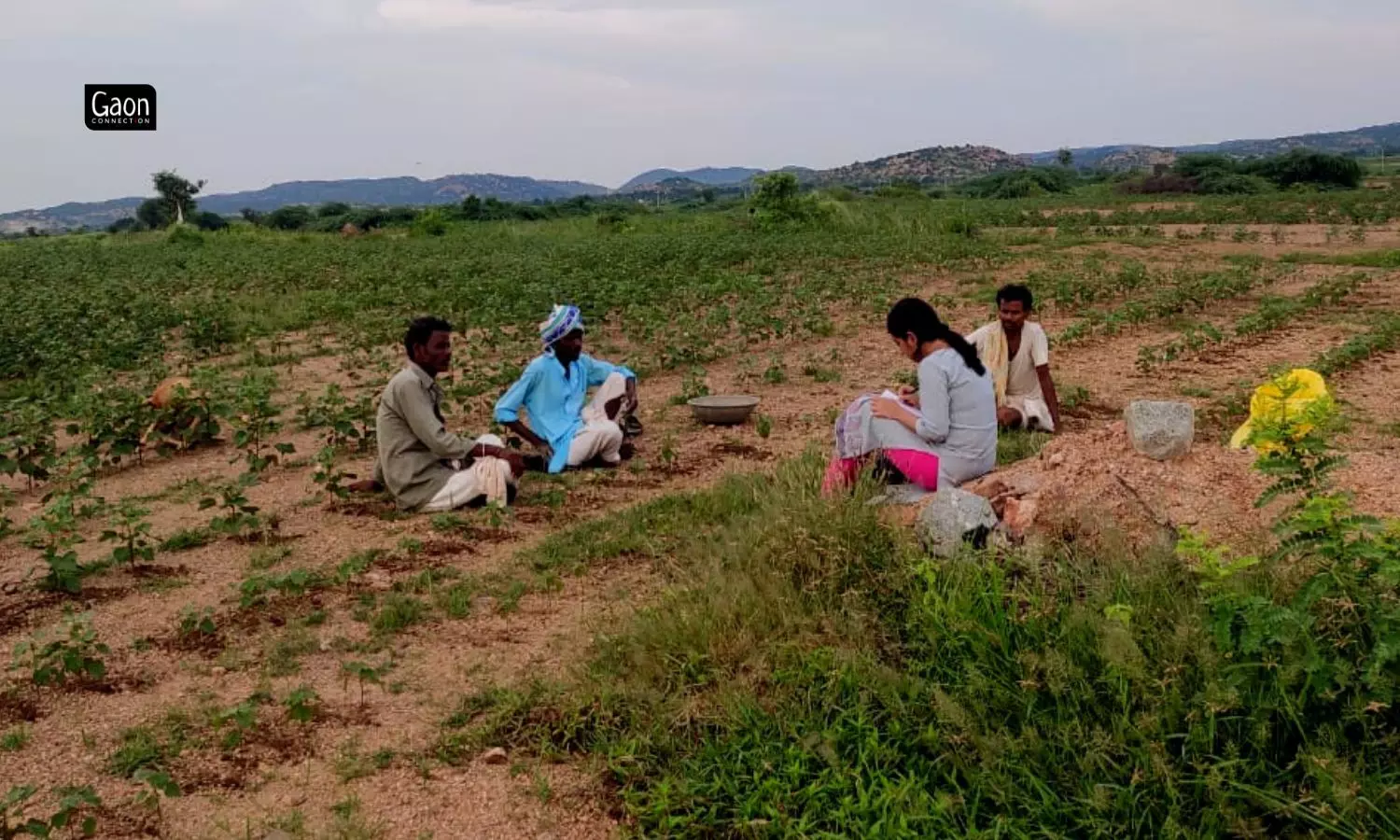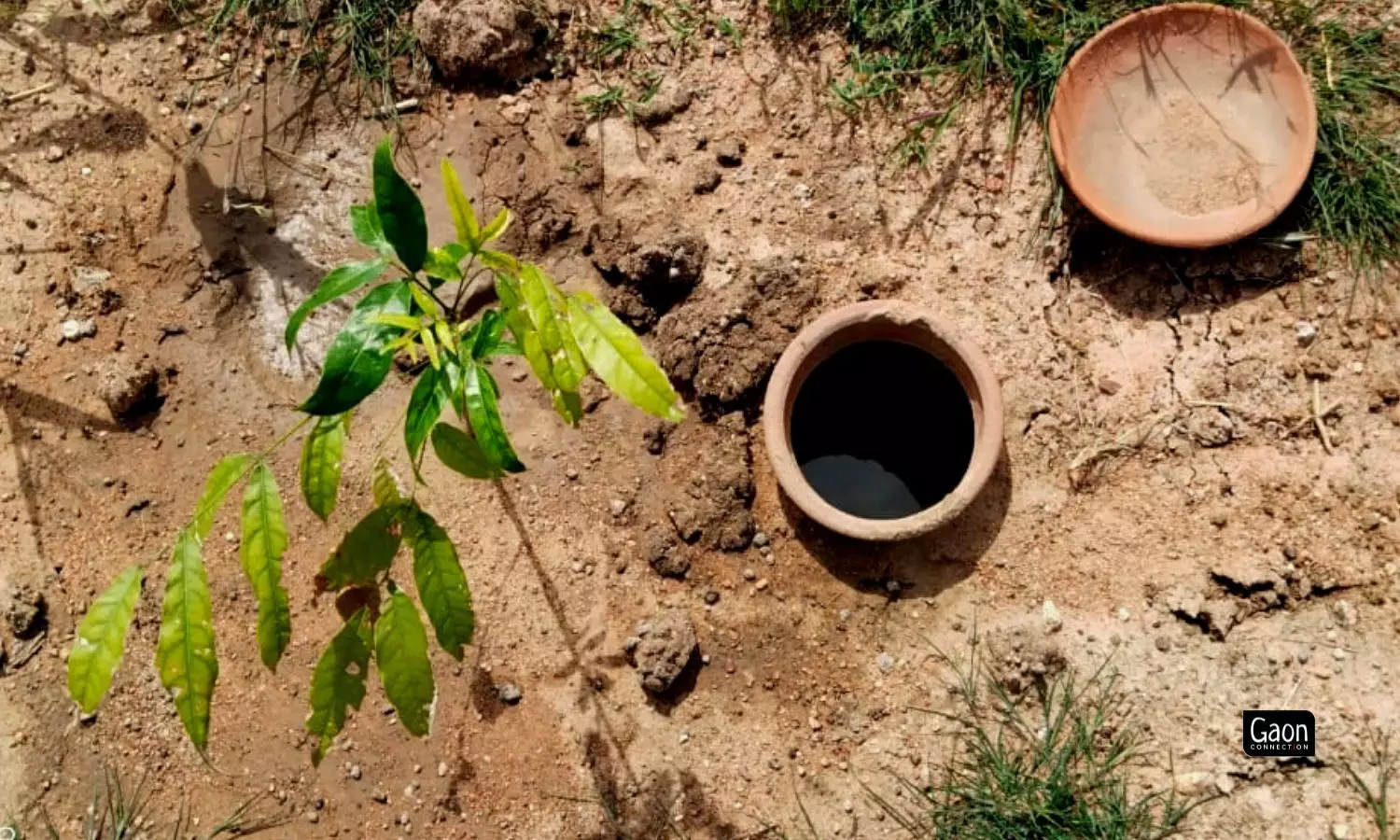Pots are ubiquitous in rural areas with every household having a set of pots which are mostly used by village women to fetch water.
But now the same humble pots are also coming to the rescue of farmers in drought-prone north Karnataka who are using cheap and locally available clay pots to irrigate their farmlands and fruit orchards, and at a much lower cost.
Raichur is a drought-prone district in north Karnataka and farmers here struggle with providing water for their crops. And due to climate change, rainfall patterns are changing making it worse for the cultivators who practise rainfed farming.
To address the problem, in July, this year, Prarambha — a Bengaluru-based non government organisation in collaboration with WELL Labs — introduced pot irrigation to farmers in the district of Raichur.
The buried clay pot or pitcher method is one of the oldest and the most efficient traditional systems of irrigation known. It has been used successfully for more than 2,000 years, notes a scientific research paper. It is well suited for small farmers who cannot invest large sums of money in irrigating their fields.

This traditional system of pot irrigation is pocket friendly and is also efficient because it requires less water than the drip irrigation system.
In this ancient irrigation scheme, porous clay pots are buried underground and slowly keep releasing water to the plants. In an acre of land, about 140 clay pots are buried. These clay pots need to be refilled with water after about a week, depending on the crops being cultivated. The clay pots can be used for three years.
Koteppa, a 45-year-old farmer from Huligudda village in Raichur, is one of 20 beneficiaries of the project in the district. He said that earlier he used drip irrigation techniques to supply water to his two hectares of land on which he cultivates mango, pomegranate, lime, berry and figs. Though there were savings in water, installing drip irrigation was expensive.
“Earlier, the cost of growing horticultural crops on my land used to be around one-and-a-half-lakh rupees [Rs 150,000] but since I have started using the pot irrigation system it costs me Rs 30,000. It is a very cost effective method and they are also less likely to be damaged by stray animals,” Koteppa told Gaon Connection. The farmer said he had switched over from drip irrigation to the pot irrigation system.
Like him, 20 more farmers in the district have adopted a pot irrigation system in their agriculture field.
“Buried clay pot irrigation uses buried, unglazed, porous clay pots filled with water to provide controlled irrigation to plants. The water seeps out through the clay wall of the buried clay pot at a rate that is influenced by the plant’s water use,” explained SS Ghanti, programme coordinator at Prarambha’s office in Raichur.
Research articles point out that the technique of pot irrigation leads to very high efficiency of water use, even better than drip irrigation, and as much as 10 times better than conventional surface irrigation. This ancient irrigation system can help address the increasing challenges of irrigation as rainfall patterns turn erratic due to climate change. The pot irrigation system is also resistant to damage by stray animals.
To make it easier for farmers and to educate them to grow their horticultural crops on degraded land with the help of a pot irrigation system, Water, Environment, Land and Livelihoods (WELL) Labs, a Bengaluru-based non-profit, has collaborated with Prarambha.
Also Read: Thirsty for more: Next to no rains in eastern UP, leave both paddy farms and cattle parched
Karishma Shelar, senior programme manager at WELL Labs, told Gaon Connection that the pot irrigation system saves about 30 per cent-40 per cent of water as compared to drip irrigation system.
“Because of degraded land and soil erosion, farmers had to face productivity and income loss so we decided to come up with the traditional system of pot irrigation and educate them about it. We run awareness campaigns and make the farmers realise that the locally available pots can not only increase their incomes but are also environment friendly,” she explained.
“We thought instead of only doing plantation drives, we should switch to the traditional irrigation system of pot irrigation, which will help the farmers to grow crops in degraded land and also help them in increasing the production as rainfall patterns keep changing,” Shelar added.
Pot irrigation is also economical to farmers. For instance, in Koteppa’s village, the cost of one clay pot is Rs 100 and for irrigating an acre of land around 140 pots are required to be sown.

In an acre of land, about 140 clay pots are buried. These clay pots need to be refilled with water after about a week, depending on the crops being cultivated.
Like Koteppa, 37-year-old Reven Siddappa, a farmer from Huligudda village, has adopted the pot irrigation system. He owns about two hectares of land on which he grows fruits including guava, mango, black berry, and vegetables like the drumsticks.
Siddappa felt that the drip irrigation system was expensive and also required too much upkeep. So when he was introduced to the pot irrigation system, he decided to switch to the traditional system as it is cost effective, requires less water and is efficient.
“This traditional system of pot irrigation is pocket friendly and is also efficient because it requires less water than the drip irrigation system. It is ideal for many small and marginal farmers like me,” Sidatta told Gaon Connection. “Earlier I had to spend around Rs 130,000 for irrigating my land but now the work is done at Rs 28,000-30,000, it is a big relief for me,” he added.




















